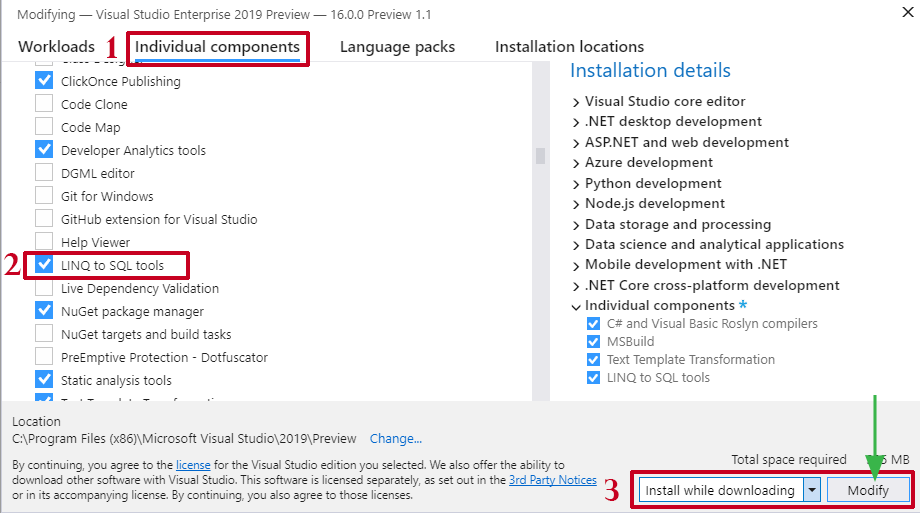
The following command adds the Z.EntityFramework.Classic package to the default project as specified in the console's project selector.
#VISUAL STUDIO 2017 DOWNLOAD COMPONENTS INSTALL#
To install a package, use Install-Package command.

To open the console in Visual Studio, go to the main menu and select Tools > NuGet Package Manager > Package Manager Console command.īy default, console commands operate against a specific package source and project as set in the control at the top of the window.This is because, they are not allowing the ARM development components to be listed in the default 'Workloads' view, and if you want them, you will. In Visual Studio 2017 setup, Microsoft seem to have done their darnedest to prevent people from installing the MSVC ARM compilers. You can use NuGet PowerShell commands to find, install, uninstall, and update NuGet packages. Caveat 1 - Getting the ARM/ARM64 compiler and libraries installed.NET-related workloads you can also install it individually by checking the Individual components > Code tools > NuGet package manager option in the Visual Studio 2017 installer. In Visual Studio 2017, NuGet and the NuGet Package Manager are automatically installed when you select any.

The exception i am getting is in relation to the 7,version8.0,chip圆4 package.

#VISUAL STUDIO 2017 DOWNLOAD COMPONENTS FOR MAC#
It is not included with Visual Studio for Mac or Visual Studio Code. Trying to install Visual Studio 2017 and it installs the IDE but none of the workloads. Clone the repo using Git, install Microsoft Visual Studio 2015 / 2017, open LocaleEmulator.sln, perform build action, clone and build the core libraries, and copy LoaderDll.dll and LocaleEmulator.dll from Locale-Emulator-Core to Locale-Emulator build folder. Scroll down to the Code tools section and select Git for. The NuGet Package Manager Console is built into Visual Studio on Windows version 2012 and later. It will take you through the process of installing SpecFlow and setting up your first project and tests in Visual Studio. Once the screen loads, navigate to the Individual Components tab, as shown in the following screenshot.


 0 kommentar(er)
0 kommentar(er)
